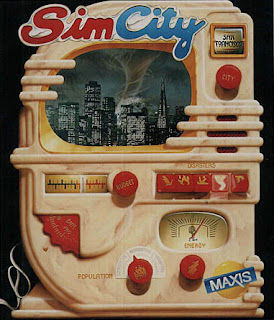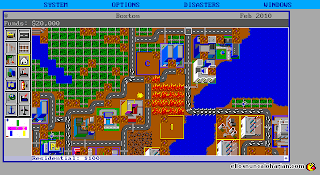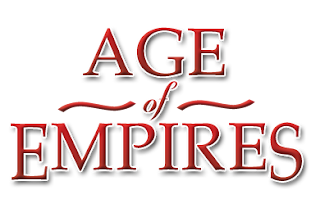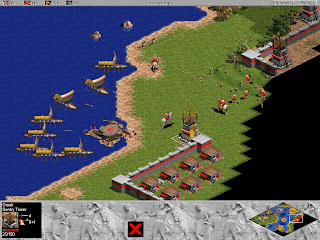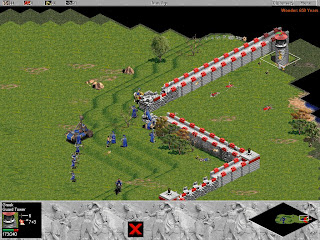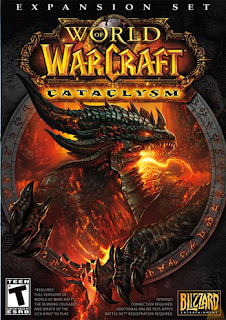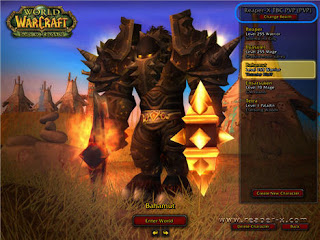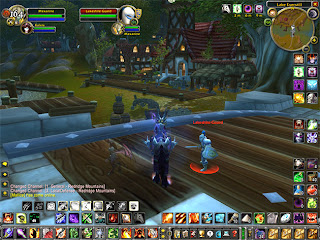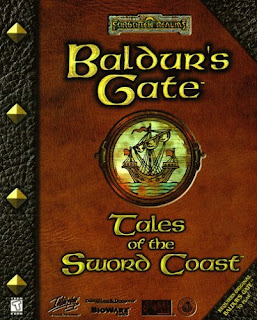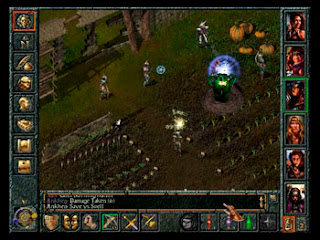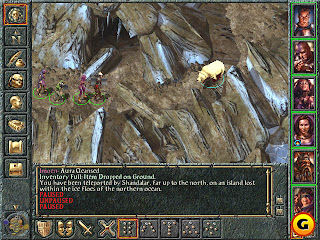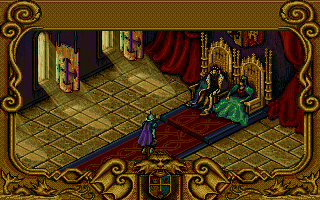Game:
StarCraft II: Wings of Liberty
Developer:
Blizzard
Platform:
PC
Release Year:
2010
Stephen's Rating:
10/10
Let me start by saying that without a doubt,
StarCraft II is the best video game ever created (to date). There are games with better stories, better visuals, better music, sometimes even better mechanics, but when you look at the whole package nothing even comes to close.
Basic Plot
The
Wings of Liberty campaign follows on four years from the end of
StarCraft: Brood Wars. At the conclusion of
Brood Wars Kerrigan's Zerg forces had dominated the Koprulu Sector. Despite having ample power to wipe the remaining Protoss and Terran forces from the universe, she instead retreats to Char.
The campaign follows the character Jim Raynor once again. The Zerg have not been heard or seen for years, but the threat of their attack remains. Arcturus Mengsk remains leader of the
Terran Dominion. Raynor is working as a mercenary after being marginalized by the media and finds himself working for the Moebius Foundation uncovering Xel'Naga relics. Raynor is "jaded and bitter" from his betrayal by Mengsk and the loss of Sarah Kerrigan to the Zerg.
Raynor forms a group called Raynor's Raiders as a means of overthrowing the Terran Dominion's oppressive rule. The Raiders search for Xel'Naga artifacts in order to sell them to the Moebius Foundation, to fund their rebellion. They also undertake missions to undermine Arctrutus Mengsk by uncovering proof of his war crimes.
Zeratul then sneaks about the Hyperion and gives a message to Raynor in the form of a crystal which shares visions. The vision entails a strange prophecy about the future of the Protoss and Zerg races as well as a hybrid of the two races. The prophecy states that Kerrigan is the only one who is capable of saving all life in the Koprulu Sector from eradication.
The Moebius Foundation turns out to be led by Valerian Mensgk, Arcturus' son. He is hoping to prove himself a worthy successor. He enlists Raynor to help him use the Xel'Naga artifacts to free Kerrigan from her infestation. After much internal resistance they travel to the world of Char where they set off the device and restore Kerrigan to her (nearly) human state.
Some Protoss Void Rays taking on some Terran Battlecruisers.
Gameplay
There are two main sections to discuss here; the campaign and single player, and the multiplayer.
Single Player Gameplay
The campaign is broken up into missions. The player is often able to choose from multiple missions beforehand, affecting both the way the story unfolds and the order of the missions. Initially the game is fairly linear until Raynor boards the Hyperion. From then on the player returns to the Hyperion between missions where they are able to:
- Choose missions to complete.
- Choose research upgrades.
- Choose armoury upgrades.
- Replay old missions.
- View news stories and other trivia hidden around the Hyperion.
- Talk to the crew of the Hyperion for extra back story.
- Play the spacies game.
The upgrades you choose permanently change the units you have during the campaign missions. For example; if you upgrade the range of your ghost or spectre units in the armoury, all spectres or ghosts you build from then on will have this upgrade. There are two kinds of upgrades.
You get research upgrades by collection Zerg or Protoss samples during missions. Obtaining them often requires going outside of the mission objectives into dangerous territory. There are two research paths which you can complete easily by the end of the campaign - one for Protoss, one for Zerg. At each stage you get to choose between two upgrades which means there is incentive to play the campaign twice to see what all the upgrades are like. For example; in the Protoss research upgrades when you reach 20 research points you can choose between either a Science Vessel or a Raven as a new unit that you can produce. Not all upgrades are new units, most upgrade existing units such as a Neosteel Bunker with better armour and extra capacity.
The Protoss and Zerg research tree on the Hyperion.
Armoury upgrades work a bit different. You obtain credits at the end of each successful mission and can choose to spend these on either new mercenary contracts, or upgrades at the armoury. There are different upgrade paths for different units, and there is no way to obtain them all. Instead the player can focus on a particular set of units which they want to maximise the effectiveness of. For example; I focused heavily on marines. The mercenaries are special hero units that you can summon a limited number of during a mission. They are stronger versions of the standard Terran units.
In essence there are two parts to the game. There's the missions themselves, and then there's the upgrading and mission selection in between. There are also some crucial points during the game where you have to choose between the advice of two of your companions. The choice you make impacts the story from that point onwards and offers extra replayability to the campaign.
The other single player game modes include playing against the AI, and playing the Challenges. AI games are a great way to initially learn how to play the multiplayer game. The units available are vastly limited compared to the campaign, and you have access to both the Zerg and Protoss races as well.
The challenges are meant to help prepare you for multiplayer by forcing you to learn important skills such as using shortcut keys, using unit abilities, walling up, knowing the benefits and weaknesses of each unit, and army composition. They are difficult to complete and you can obtain either a bronze, silver, or gold rank depending how you perform on each.
As with multiplayer there are a vast set of achievements which can be obtained during the campaign the single player games. For example; completing every challenge with a gold rank gives you the Spectre portrait and unlocks an achievement. These have no use functionally and serve only as an aesthetic "medal" you can show off to your friends.
Multiplayer Gameplay
Multiplayer matches can be broken up into many categories. There are four different game styles which make up the
ladder and are ranked. These are 1v1, 2v2, 3v3, and 4v4. The team games can be played with your friends by forming a party, or you can search for a game and get teamed up with random people over the internet. There are also free for all (FFA) games which are unranked, as well as a multitude of custom games using either Blizzard made or fan-made maps. A lot of the custom games created by the public are complete games within themselves which break away from the original game mechanics completely.
Protoss forces engage a Terran base.
When you first start multiplayer games you get put into
Practice League. In this league the game speed is set to Normal, you play on special novice maps which have lots of destructible rocks, and you get 50 games with no consequences or impact on your ladder ranking.
Once you are finished with Novice League (you can opt out at any time) you start your five
placement matches. You will be matched up against a variety of opponents from differnet skill levels. Depending on how well you do you'll be placed in a league. The leagues are as follows (and don't quote me on the figures for Bronze to Diamond, I heard this but can't confirm):
- Bronze League; the bottom 20% of players in your region.
- Silver League; the bottom 20-40% of players in your region.
- Gold League; the top 40-60% of players in your region.
- Platinum League; the top 20-40% of players in your region.
- Diamond League; the top 20% of players in your region.
- Masters Leaguel the top 2% of players in your region.
- Grandmasters League; the top 200 players in each region.
Each League is broken up into divisions. A division contains 100 players whom you are essentially competing against although you may never play any of them. You are given a division ranking; for example you might be in Silver League and be rank 38 in your division. The rankings don't actually have any direct relationship to how close or far away you are from ascending to a higher league but rather how many points you obtain by playing games. Usually the players who play the most have the highest division ranking.
You get re-placed for every team you are involved with. For example; your 1v1 games you are ranked as a solo team. Each time you play with a new friend, you will be considered a new "team" and be placed independently to your other rankings. This is really useful; you might be diamond league for 1v1 but have a friend who has just started the game and you want to play 2v2 matches with him or her. In your placement matches you're likely to lose a lot and might get placed in bronze or silver league which is appropriate considering your strength as a team.
Once you are placed the leagues are not locked. You can ascend to a higher league simply by beating players who are better than you on a regular basis (in a higher league). There is a hidden score system that you cannot view directly, but your objective is to increase your score to get into a higher league.
Periodically the season ends and a new season starts. When this happens you have to play one match to re-evaluate your league placement and all of your stats are cleared. Often before a season is about to end the leagues will be "locked" meaning you can lose or win as many games as you like but will stay in your current league until the next season starts.
A Zerg base under attack. The purple creep surrounds everything they build on, and is spread all over the map to help Zerg units move faster.
The actual game is a real time strategy game similar to the original
StarCraft but faster paced. You have to manage economy, research, military, and your opponents at the same time. This is a complex thing to do. It's easy to pick up the basics, but the nuances of the game mean there is always something new to learn or work on to improve your game. Players can pick from three races;
- Terran are humans and are the focus of the Wings of Libery campaign. They have utilitarian units which can be adapted to any purpose. In general they have quite strong units but are slow to re-build their forces and often play defensively in the early stages of the game.
- Zerg are your standard Aliens type of creature. They are a race of organisms who "infest" other races and assimilate them into their Swarm. Zerg are probably the most different (and arguably difficult) race to use. They spawn units from hatcheries, have Queen's to assist them, and have generally weak units which are meant to be expendable. Playing Zerg requires a lot of micromanagement.
- Protoss are the high-tech Predator like race. They have powerful units but have less variety than Terran. With warp gates they are able to warp in basic infantry armies quickly and they can also chrono-boost production to speed up building and upgrading. I play Protoss.
Each race has strengths and weaknesses but ultimately they are fairly balanced. There are regular patches to address balance issues, and the new
Heart of the Swarm expansion will add new units to each race which will mix things up again.
The ultimate objective is to destroy all of your opponents buildings. There are a whole raft of strategies involved which I am not going to go into great detail with but here are some headlines:
- Cheesing which is another name for an "all-in" strategy. This involves trying to win the game quickly at the start of the game while taking the risk that if you fail, you've essentially lost the game because your economy is so far behind. There are multiple varieties available to each race and two of the most classic ones are the 6pool or 8pool from the Zerg where they sacrifice economy to get zerglings in the opponent's base as quickly as possible, and cannon rushing from the Protoss which involves building photon cannons in your opponents base which are difficult to deal with early on. There is a famous Youtube series called When Cheesee Fails which documents some spectacular cheese fails on the ladder.
- Macro is all about economy and build order. A player with good macro will have better income, more units, more research completed than someone who doesn't. Macro isn't just about getting lots of money, it's about build order; what to build and when in order to be efficient. Working on this kind of thing is recommended as a first approach to new players and the strategy differs between races.
- Micro is about micro-managing your units. Micro helps win individual battles but can't win games by itself. Micro is about using your units special abilities and taking advantage of terrain and map features which can help you win a battle. For example, a Protoss sentry can place force fields which stop units getting past. A single force field can stop the enemy going up the ramp into your base, and can save you from early aggression.
- Scouting; if you don't know what your enemy is doing you don't know how to prepare/counter. Scouting is very important right from the start of the game. Keeping map control and knowing what is going on is an ongoing part of the game which takes some effort to maintain.
In a nutshell the number of combinations of strategy involved in the game are endless. Because of this, and because you're playing against real people who are unpredictable the replayability of even just the base game is beyond any other game I've ever played. That doesn't account for the custom games, some of which are fully fledged games of their own right with huge followings. Examples of these include
Squadron Tower Defence and
Marine Arena.
Battle.net Features
Firstly, Battle.net handles match ups automatically. You hit "find game" and it will find a close-enough matched opponent for you to take on. If you want a team game, it will find you a teammate. It's so easy to play multiplayer by yourself or with your friends.
Secondly, the friends system is easy to use and very well executed. Down the bottom right is an icon which shows you how many friends you have online. This stretches across to other Blizzard games such as
World of Warcraft too. There is a Facebook account feature which finds anyone in your Facebook friends list who has the game, and connects you up. Additionally you can meet friends and add them in your games and also block and mute players who are offensive.
I cannot stress enough how effective the friends system is. When I jump into the game I know instantly who is online and what they're playing. I can chat to them with the press of a button, join a party, and start playing.
Positives
Some of the things that make this game spectacular;
- The complexity and variety of gameplay is immense. There is little wonder why this game is the most successful pro game out there with tournaments all over the world with large cash prizes.
- There is a huge fan following with people posting parody, commentating games, talking about strategy, and just general discussion all over the internet. I heard that there are about 12 million StarCraft II players in the world so you are never without someone to play with.
- The custom games are amazing. I play some of them more than I play the actual game.
- The friends system and interface are excellent.
- The campaign is fun and replayable.
- The achievements and portrait system are fun and add incentive to play more games.
Choosing a player portrait. You unlock portraits by getting achievements in the game.
Negatives
You can't play offline or LAN. You have to be online all the time. If the Battle.net servers are down, you can only play in "offline" mode which is single player only and all your achievements and progress are unavailable.
Some of the players out there are incredible. Starting now would be tricky, as there are just too many good players out there to ascend the ladder quickly.
Memorable Moments
StarCraft II brings people together. I have re-connected with old friends and acquaintances through the game's Facebook friend finder. One such person I now consider one of my closest friends, and we talk pretty much every day - and we still play StarCraft together many times each week. The Battle.net service and the way the game is organised has brought a group of us together in a way no-other game could.
We have actually made some videos based on
StarCraft II including a music video and a little sketch to some music. Check them out:
"Eight Pool" music video.
Viva la Dirt League Teaser
